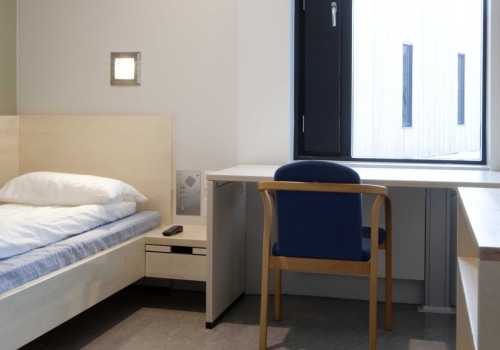If your medical team has recommended short-term rehabilitation, you may have questions about this type of care, especially if this will be your first experience with rehabilitation. Perhaps the most common question people ask themselves is what they can expect a rehabilitation program to do for them. To help you answer this question, we'll review 3 goals of short-term rehabilitation. Goal setting is used to direct rehabilitation interventions toward a specific outcome (s) and can result in greater client satisfaction and better recovery.
Setting shared goals can also coordinate multidisciplinary team members and ensure that they work together toward a common goal and that nothing important is missed. Objectives can also be used to assess the success of rehabilitation interventions. The rehabilitation team or therapist sets short- and long-term goals for each problem. For example, a person with a hand injury may have limited range of motion and weakness.
Short-term goals can be to increase range of motion by a certain amount and increase grip strength by many kilos. The long-term goal may be to play the piano again. Short-term objectives are set to provide an immediate and achievable goal. Long-term goals are set to help people understand what they can expect from rehabilitation and where they can expect to be in several months.
People are encouraged to achieve each goal in the short term, and the team closely monitors progress. Goals can be changed if people don't want or can't (financially or otherwise) continue or if they progress slower or faster than expected. Phase IV Restores strength, adds sport-specific movements with the progression of the speed of these movement patterns to the speed of the game. The goal of the third phase of rehabilitation is to increase strength.
Isometric (pushing against an immovable object) can be used first, followed by the use of elastic bands of different strengths, free weights, cuffs, or weight equipment. Rehabilitation is an important part of universal health coverage and is a key strategy to achieve Sustainable Development Goal 3: “Ensure healthy lives and promote well-being for all at all ages.”. The need for rehabilitation affects all age groups, although the type, level and objectives of rehabilitation often differ by age. A meaningful goal can maximize patient participation and motivate them to participate in rehabilitation to achieve their goals.
Goal setting helps health professionals plan their interventions for what is best or most meaningful to the patient, rather than what is best for health professionals (where there are differences). Restoring function and independence lost through injury, illness, surgery, stroke, or other medical events is one of the primary goals of short-term rehabilitation. Rehabilitation also allows individuals to participate in education and gainful employment, remain independent at home, and minimize the need for financial or caregiver support. Although age alone is not a reason to alter the goals or intensity of rehabilitation, the presence of other disorders or baseline limitations may be.
The table below is from The Learning Corp and is an excellent demonstration of how to take initial patient or client statements and turn them into practical and measurable goals. While the time it takes varies from patient to patient, your rehabilitation team will work to help you recover and return to your life in the shortest possible time, another goal that is met by intensive, comprehensive, and highly personalized treatment plans used in the short term. rehabilitation programs. Goal setting is important for rehabilitation because it can motivate the patient, especially when they are functional and relate directly to real-life activities.
Another primary goal of short-term rehabilitation is to help patients achieve their best personal levels of recovery and rehabilitation as soon as is medically safe and possible. Instead of considering this as a failure, unmet goals can be used to analyze what could be a realistic outcome for the person's rehabilitation and to guide challenging discussions about expectations versus reality. A term and acronym to underpin, remember and support the rethinking of goal-setting actions and activities, with potentially more relevance to rehabilitation. This comprehensive treatment, therapy and care help ensure consistent progress toward your recovery and rehabilitation goals.
There is a growing body of literature devoted to the underlying theories, methods, and evidence for goal setting in rehabilitation. . .
mens living sober house






